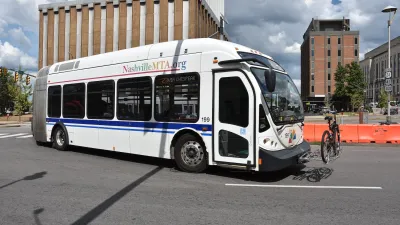If the technology takes off, city officials will need to step into the world of aviation rules to ensure safety and limit environmental impact.

A new report from the Berkeley Transportation Sustainability Research Center outlines some of the steps that aviation agencies and urban planners will need to take to plan for ‘advanced air mobility’ such as air taxis and delivery craft.
Writing in Smart Cities Dive, Dan Zukowski notes that “The Federal Aviation Administration published guidelines for the operation of air taxis in the nation’s airspace last year, expecting growth to accelerate beginning in 2028.”
Air taxis are “electrically powered aircraft that can take off and land vertically like a helicopter” that supporters say could ease traffic congestion and offer a new, sustainable transportation mode.
Many local governments shy away from aviation regulation, but if air taxis become safe and viable, city planners will need to pay close attention. “One area for collaboration is planning future development near vertiports. Aircraft will need approach and departure paths, and a tall building erected near a vertiport could affect flight operations.”
Cities will need to update zoning ordinances to regulate where vertiports can be located, how the services would impact neighborhoods, flight times, and connections to existing transit and key destinations. “The report concludes that the public sector will need to understand public perceptions of advanced air mobility deployments, develop zoning provisions, evaluate demonstrations and early operations and prioritize stakeholder and community engagement.”
FULL STORY: Air taxis will require urban, aviation planners to join forces: APA

Alabama: Trump Terminates Settlements for Black Communities Harmed By Raw Sewage
Trump deemed the landmark civil rights agreement “illegal DEI and environmental justice policy.”

Planetizen Federal Action Tracker
A weekly monitor of how Trump’s orders and actions are impacting planners and planning in America.

The 120 Year Old Tiny Home Villages That Sheltered San Francisco’s Earthquake Refugees
More than a century ago, San Francisco mobilized to house thousands of residents displaced by the 1906 earthquake. Could their strategy offer a model for the present?

In Both Crashes and Crime, Public Transportation is Far Safer than Driving
Contrary to popular assumptions, public transportation has far lower crash and crime rates than automobile travel. For safer communities, improve and encourage transit travel.

Report: Zoning Reforms Should Complement Nashville’s Ambitious Transit Plan
Without reform, restrictive zoning codes will limit the impact of the city’s planned transit expansion and could exclude some of the residents who depend on transit the most.

Judge Orders Release of Frozen IRA, IIJA Funding
The decision is a victory for environmental groups who charged that freezing funds for critical infrastructure and disaster response programs caused “real and irreparable harm” to communities.
Urban Design for Planners 1: Software Tools
This six-course series explores essential urban design concepts using open source software and equips planners with the tools they need to participate fully in the urban design process.
Planning for Universal Design
Learn the tools for implementing Universal Design in planning regulations.
Clanton & Associates, Inc.
Jessamine County Fiscal Court
Institute for Housing and Urban Development Studies (IHS)
City of Grandview
Harvard GSD Executive Education
Toledo-Lucas County Plan Commissions
Salt Lake City
NYU Wagner Graduate School of Public Service





























